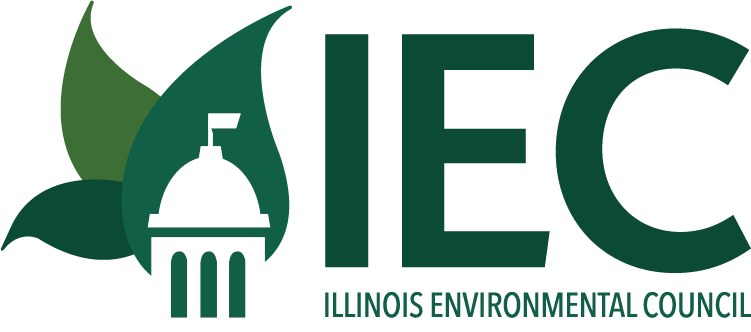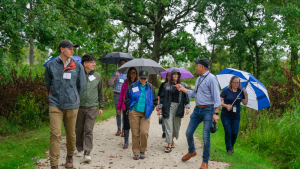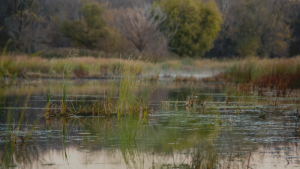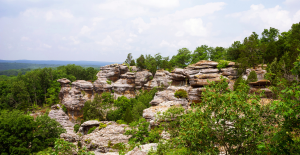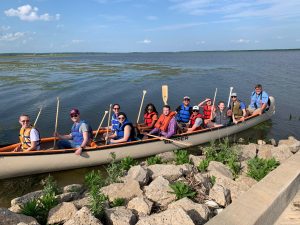Saving Our Wetlands
Illinois Wetlands are Under Threat
Illinois has lost 90% of its historic wetlands to pollution, development, and climate change. We seek to codify state-level wetlands protections and processes to safeguard these sensitive, but highly functioning ecosystems. Gov. Pritzker’s support is crucial.
The Clean Water Act and Wetlands
A Devastating Decision
In late 2023, the U.S. Supreme Court gutted the Clean Water Act in Sackett v. Environmental Protection Agency. This decision eliminated the legal protection of many wetlands across the country, including here in Illinois. Since then, the number of wetlands protected by the Clean Water Act has dropped by nearly a third.
IEC is Stepping Up
Many other states have their own laws protecting isolated wetlands. Illinois is a state that doesn’t. IEC and our partners are educating our decision-makers — everyone from the governor to state agencies to your senators and representatives — on the importance of state-level protections for wetlands .
Without these policies, they’re left vulnerable and at risk. In our changing climate, we can’t afford to lose anymore.
Trump Announces Polluted Water Rule
On November 17, 2025, the Trump administration’s Environmental Protection Agency (EPA) and Army Corps of Engineers announced the Polluted Water Rule, which further restricts which bodies of water are protected from pollution and destruction under the Clean Water Act.
Pollution Flows Downstream
As a result, the health of all of our water sources—both big rivers and lakes and small streams and wetlands—are threatened. By recklessly putting our clean water at risk, our drinking water and public health will be compromised, fish and wildlife habitats will be further threatened, and our blue economy will suffer. Kicking big problems downstream is the Trump administration’s modus operandi, but here in Illinois, we can do things differently. We have to fight like hell for what remains.
What are Wetlands?

Illinois wetlands are some of our state’s most valuable natural resources. These ecosystems are defined by the presence of water. However, lakes and rivers, for example, are not wetlands. Key wetland ecosystems include: marshes, swamps, bogs, and fens.
Wetlands must have one or more of the following three attributes:
- at least periodically, the land supports predominantly water loving plants
- the sub layer is predominantly undrained, wet soil
- the sub layer is saturated with water or covered by shallow water at some time during the growing season of each year
Wetlands are found in urban and rural river floodplains, lake edges, and prairie basins. In fact, organizations like The Wetlands Initiative are working on major wetland restoration projects in Illinois, including Dixon Waterfowl Refuge at Hennepin & Hopper Lakes, Midewin National Tallgrass Prairie, and the Calumet Region.
Wetlands are Engines of Biodiversity
Wetlands provide a habitat for a rich variety of wildlife. They are one of the most biodiverse and active habitats in the world. They’re also a lifeline: many of the state’s endangered and threatened species, like the Blanding’s and spotted turtle, call wetlands home.
Gov. Pritzker: We Need Your Help
Send a Message to Gov. Pritzker
Big developers with deep pockets and top-dollar lobbyists are standing in our way.
Build Power for Wetlands
Use the buttons below to contact your decision-makers.
Your Legislators
Send your senator and representative a note, urging them to act.
Join Our Campaign
Sign up for updates, action opportunities, and more!
Wetlands Provide Important Services
Flood Mitigation
Wetlands act as natural sponges, soaking up excess rainwater and reducing the risk of flooding in nearby communities. By slowing and storing runoff, they provide an estimated $755 million in annual residential flood mitigation benefits.
Over the long term, these benefits add up to between $10.8 billion and $25.2 billion. Protecting wetlands is a cost-effective way to safeguard homes, infrastructure, and lives from increasingly frequent and intense storms.
Outdoor Experiences
Wetlands are a vital part of what makes the Illinois outdoors so special. They support wildlife, clean our water, and help create great places for hiking, hunting, fishing, birdwatching, photography, and more.
Polls show that nearly 80% of Illinoisans want to protect natural areas like wetlands, prairies, and forests. Our state’s outdoor spaces support over 175,000 jobs and bring in more than $10 billion every year—proof that protecting wetlands means protecting what we love.
